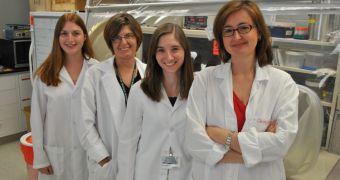For many years, researchers have been wondering why is it that certain microorganisms appeared to be capable of producing electricity while they were cleaning up nuclear wastes and toxic metals. The results of a new investigation finally shed light on the mechanisms involved in this ability.
The work was carried out by a team at the Michigan State University (MSU), and details of its conclusions and methodology appear in the latest issue of the esteemed journal Proceedings of the National Academy of Sciences (PNAS).
MSU microbiologist Gemma Reguera says that the process she and her team discovered could conceivably be improved to industrial standards, patented, and then employed at a large scale to benefit locations that have been severely contaminated by nuclear materials.
The thing that separates this new study from others like it is that the team was able to discover the structures that Geobacter bacteria are using in order to immobilize uranium. The most important role is played by nanowire-like pili, thin conductive tubes that channel the radiation.
At the same time, these pili are also responsible for managing the electrical activity of the bacteria while the microorganisms are consuming the nuclear materials. As such, studying and replicating them via nanotubes is bound to become the next focus of future studies.
“Geobacter bacteria are tiny micro-organisms that can play a major role in cleaning up polluted sites around the world,” Reguera explains. She is also a scientist with the MSU AgBioResearch. The expert adds that the naturally-occurring nanowires also shield these lifeforms from their toxic environments.
“Uranium contamination can be produced at any step in the production of nuclear fuel, and this process safely prevents its mobility and the hazard for exposure. Our findings clearly identify nanowires as being the primary catalyst for uranium reduction,” she indicates.
“They are essentially performing nature’s version of electroplating with uranium, effectively immobilizing the radioactive material and preventing it from leaching into groundwater,” the scientist adds. A test conducted at a site in Rifle, Colorado, confirmed the team's suspicions.
Funds for the new investigation were provided through grants received from the US National Institute of Environmental Health Science and the Department of Energy (DOE). Scientists Dena Cologgi, Allison Speers, Sanela Lampa-Pastirk and Shelly Kelly were also a part of the study.
What the groups plans to do now is to create a genetically-modified strain of Geobacter that would be capable of producing more nanowires on its surfaces. If these microorganisms are ever to be used naturally, this is absolutely necessary.

 14 DAY TRIAL //
14 DAY TRIAL //